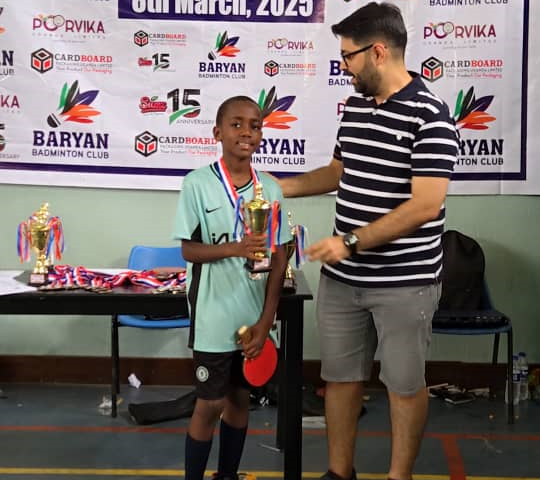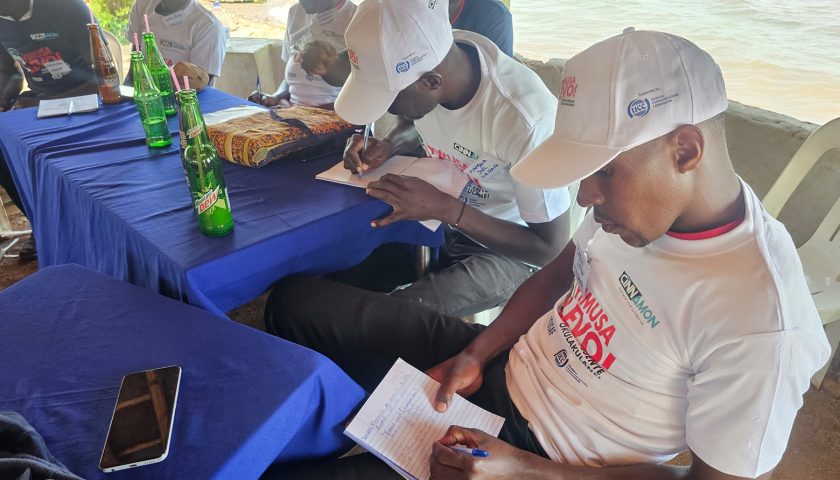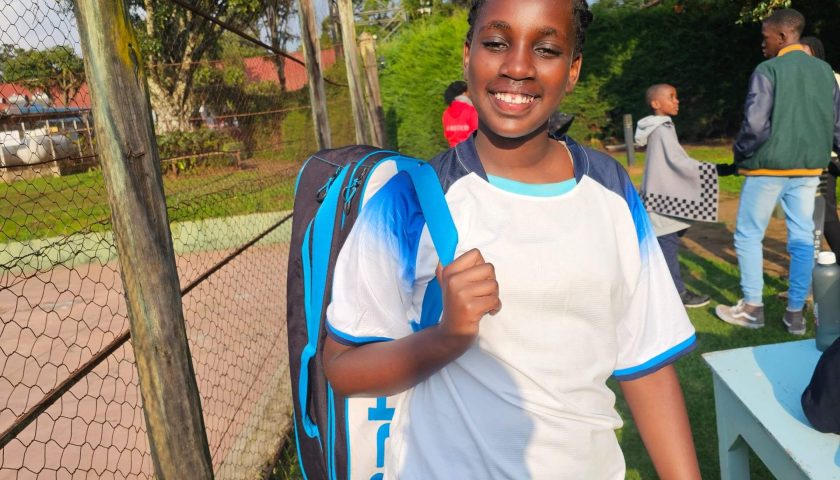Transcript for Video – 20 November 2020
DM: It’s quite amazing that young people, the generation of this world is into manufacturing. We used to think that manufacturing was for old people, was for the bazeeyi. But now, it’s us, it’s the youths that are into it and are taking it by the horn.
In this episode, we are going to meet one gentleman who has started a manufacturing plant. He does adhesives, he does grout; it’s going to amaze you how he has been able to build his factory from scratch to where it is now.
We are going to go through the whole process of what he does and how he has been able to grow a manufacturing plant from just… well he’s going to tell us.
I’m at the venue. I’m at Adexxa. Welcome with me the CEO and founder of Adexxa, Mr. Joseph Kawombe.
DM: You are welcome. How are you?
JK: I’m good. Glad to meet you.
DM: Glad to meet you too. Nice place here.
JK: Thanks for appreciating.
DM: Tell me. This looks wonderful. How is it?
JK: Thanks for appreciating. You’re very welcome. This is Adexxa. This is where we manufacture tile adhesive in the names of Adexxa and grout. The location of the place is Nagalama along Kayunga Road. You’re welcome.
DM: I know you. I know you’ve been in employment, in public service. How did it occur to you to start a manufacturing plant?
[00:02:00]
JK: Just the way you’ve said it. I’ve been in formal employment. I’ve been in public service. I’ve also tried to do some kind of trading; importing and selling. I’ve been trying to find out: what is the most sustainable thing someone can do?
DM: I’m really glad to be here. I’m happy with what I’m seeing. This is very good progress and I’d like to congratulate you on this place.
JK: Thank you.
DM: It gives hope to the youth. It gives hope to us that at least we can also manufacture things. Briefly about yourself, so that our viewers can get to know who Joseph Kawombe is
JK: I’m 39 years old.
DM: You’re still a youth.
JK: Yes. I’m married. Formerly employed. But along the way I got this concept to try and start up something to make myself self employed. Currently I’m the proprietor of Adexxa Tile adhesive and under the company called Lukomo Uganda LTD.
DM: It perplexes my mind. I used to think that manufacturers are very old people. That people who owned factories are old men with grey hair. You have some little, but you’re not that old. How did you come up with the concept of manufacturing and why did you choose to go into manufacturing?
JK: What normally happens in our society, everyday society. You go to school, finish school. The first thing is employment. Employment is either formal or civil service. If that doesn’t work out well for you because there are not many jobs, someone could think of starting up their own.
[00:04:00]
In most cases for the youths, it is mostly trading. You go to Dubai, buy some things, bring, start up a shop in a certain plaza or arcade; Kikuubo…buy and sell. That is the kind of normal setting. As you have said, it is very hard to find a youth thinking of manufacturing.
DM: Let me tell you. It sounds so huge and big. I would like us to break it down so that someone who is watching us today can actually think of starting a manufacturing plant, even today.
JK: That is it. Manufacturing does not necessarily mean either machinery or heavy equipment. To break it down for someone, manufacturing is actually adding value to something so that you can be able to sell it because of that added value.
To break down manufacturing to its simplest, I can take an example of these ladies along the street.
DM: Those who sell us roasted maize, simsim.
JK: If it is roasted maize, that means that just roasting that maize, you have added value to it such that someone can eat it. It’s like you are manufacturing roasted maize.
DM: So in simple terms, that lady has manufactured something?
JK: Something that she can be able to exchange for money.
DM: I love the simplicity.
JK: Because of its value to someone. In the same kind of thinking, after putting together all that I’d gone through, the formal employment, trading, public service employment, it came to my mind that the only real satisfaction you can ever get through whichever efforts you put into something is by putting something on the shelf, putting something out there which people can see value in, to buy.
DM: I’d like you to repeat. [00:06:00] Putting something on the shelf.
JK: That is it. The only satisfaction you can ever get, real satisfaction, when it comes to doing business, it is putting a product, something, whatever, on the shelf. Be it the shelf of a supermarket, the shelf of a hardware, be it the shelf of a shop. Something that people can look at and say, “This thing has a certain value that has been added to it and therefore it can help me in this, and I can pay for it. That is the kind of thinking that came to me.
When that thinking came to me, of course there were a lot of wild ideas on what to manufacture. In all the ideas, since I was in public service as I told you, one of the biggest and fast growing sectors in Uganda, is infrastructure. I think you know that. Everywhere there is construction, buildings coming up. Among the ideas that came to me; one of the ideas that caught my attention was: why don’t you involve yourself in adding value to something, or putting on the shelf something that can be used in construction.
DM: Because you found that it was fastest growing, meaning there is market.
JK: The market is too big.
DM: And of course there are gaps.
JK: The gap is too big.
DM: Tell us about the gaps.
JK: Tile adhesive is used for fixing tiles.
DM: What were those gaps that you found out or you saw in the construction business that led you to actually zero down to Adexxa adhesive and grout?
JK: When you look at our construction industry especially [00:08:00] within and around Kampala, one of the key constructions taking place apart from roads, they are buildings. Buildings within the city and mostly buildings to do with housing people. These can be seen from the different suburbs. In Naalya, Najjera, Kiwatule. You see a lot of mushrooming apartments in those places.
In today’s time, I am sure you cannot talk of a residence or an apartment which is not tiled. To be able to tile – all those apartments you see, they have tiles. They have tiled bathrooms, they have tiled floors. That means by all means, those people who are constructing those apartments will need adhesives and grout. That was my niche. That was my gap that I wanted to fill up.
When you do research about the different types of adhesives on the market, just about three to five years ago, you could rarely find locally manufactured adhesives. We had brands from Dubai, China, Spain, Italy. There was a very big gap because all the tile adhesive that was being used by that booming construction sector, had to be imported. By getting that information and the research, I discovered that there was a really big gap for locally manufactured tile adhesive to be able to feed the booming construction industry. That is how I zeroed down on tile adhesive.
DM: You called it Adexxa tile adhesive. [00:10:00] I love your brand. Nice logo.
JK: In fact you can put on as well.
DM: Do I go with this or it is for the construction?
JK: You can go with it because it is part of publicity.
DM: Thank you. We are going to talk about branding later. But, let’s go to the challenges. It is very easy for someone to say: I started with a feather, now I have a poultry farm. I started with one rice, now I have a hotel. You’ve seen those?
JK: Yes, I have.
DM: How did you start? Yes, we have simplified manufacturing, but it’s not that simple. I see machines; how did you start?
JK: Having identified the gap and having zeroed down to going in for manufacturing tile adhesive, the first thing was to acquire a place to where I would be able to put up the small plant. That was acquiring land. In Uganda you know, acquiring land and acquiring other startups for such a facility, you really need capital which really does not come that easy.
That was a big hurdle.
Acquiring land and putting up a structure took me at least three years. From 2017, end of 2016, it was all about acquiring land and setting up using the small savings, help here and there, loans. It wasn’t easy. That’s why it took that long period of time.
The other challenge was acquisition of the machines. At first I wanted to begin with a fully automated plant, [00:12:00] the way you see them like in China. That is the dream I had. I wanted to set up something.
DM: and that is the dream of every entrepreneur.
JK: That is where that concept comes in for us the young people. You dream and you’re like: If I’m to set up a tile adhesive plant, it should be fully automated.
DM: That I can even see what’s happening from my home; I set mixtures from my home, you know….
JK: On sitting down and doing research, finding out the prices, importing, it was very expensive. But in my mind, I had already made up my mind to start. I moved around and got concepts of locally made machines. I decided to settle in for locally made machines. Those are the ones I’m using at the moment.
DM: Largely it was Buy Uganda Build Uganda. So you bought machinery from here… is that from Katwe?
JK: Yes, from Katwe.
DM: Big up to our Katwe guys. So you bought machinery from Uganda? We should say assembled from Uganda. Your product is a Ugandan product, purely Ugandan.
JK: My product is purely Ugandan. That is why we have this (shows stickers) – Product of Uganda.
DM: I should congratulate you for this. You know, I like these stories that encourage startups and help them to think – not to overthink but help them know that they can start small, as opposed to thinking of buying a machine from China. You can still use what’s available to start.
JK: What’s locally available to start. If you want to grow bigger, that can be long term. But the most important thing is start from what you have, using what you have. Slowly by slowly you can progress to where you want to be. [00:14:00] But ours was to make sure that I start.
[END OF PART ONE]




